I grew up in the south of the Netherlands, the area where they celebrate “Carnaval”. Most of the Americans know Mardi Gras or the Carnaval event they celebrate in South America. But only a few people know that Europe also celebrates Carnaval. I was amazed by the pictures online from friends and family who celebrated Carnaval this year! The costumes and Face Paint ideas were soooo colorful and beautiful! I love making costumes, so scroll down, if you’re looking for a FREE tutorial for a cute owl costume.

For a FREE costume tutorial, click here!
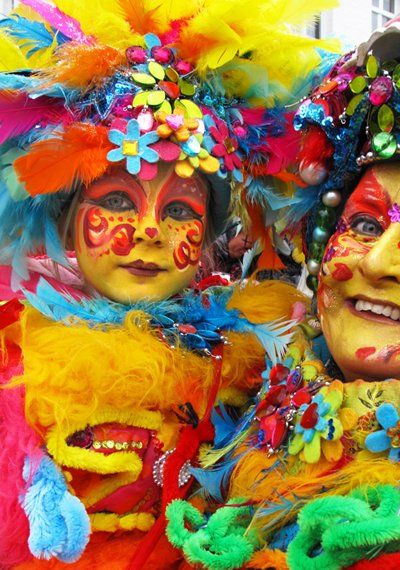
photo source
What is Carnaval
Carnaval or “Vastenoavend”, we say in the south of the Netherlands (Eve of Lent) which is held in February or early March. Carnaval typically involves a public celebration and/or parade combining some elements of a circus, masks, and a public street party. People dress up in all kinds of costumes. That is the holiday for us southerners to dress up.
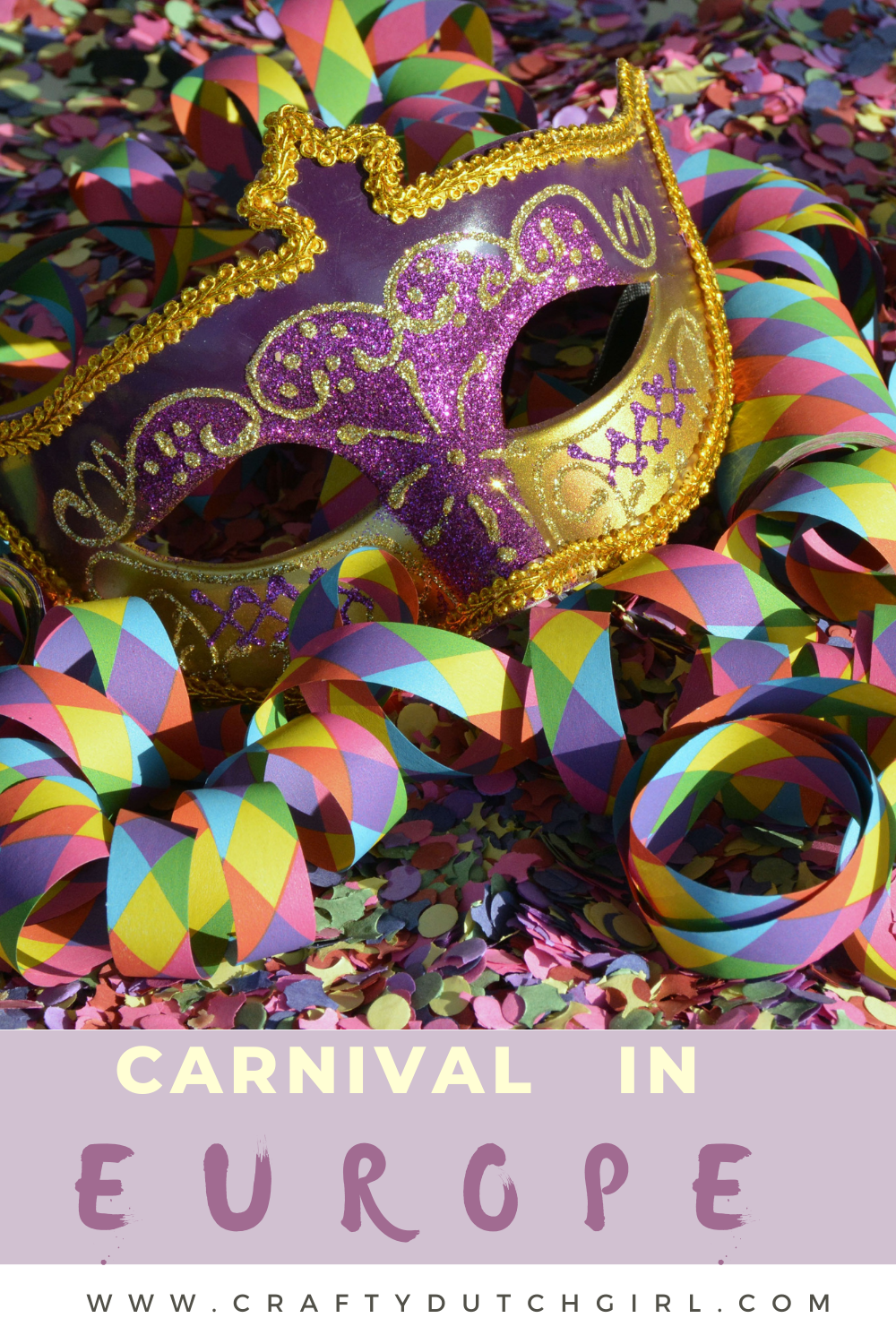
History of Carnaval
Because Lent was a period of fasting, “Carnival therefore represented a last period of feasting and celebration before the spiritual rigors of Lent.”
The word “Carnaval” is said to come from the Late Latin expression carne levare, which means “remove meat”; a folk etymology derives it from carne vale, “farewell to meat”.
Before Lent began, all rich food and drink were consumed in what became a giant celebration that involved the whole community, and is thought to be the origin of Carnival.
Pope Gregory the Great (590–604) decided that fasting would start on Ash Wednesday. The whole Carnaval event was set before the fasting, to set a clear division between celebrations and penitence.
It was also the custom during Carnival that the ruling class would be playfully mocked using masks and disguises.
Some of the best-known traditions, including carnaval parades and masquerade balls, were first recorded in medieval Italy. The Carnival of Venice was, for a long time, the most famous carnival (although Napoleon abolished it in 1797 and only in 1979 was the tradition restored). From Italy, Carnival traditions spread to Spain, Portugal, and France, and from France to New France in North America. From Spain and Portugal, it spread with colonization to the Caribbean and Latin America. In the early 19th century in the German Rhineland and Southern Netherlands, the weakened medieval tradition also revived. Source.
Where do they celebrate Carnaval in Europe?
Our oldest child, J., visited their significant other in Switzerland. This year (2022), they arrived in the Netherlands first to visit my parents at the time Carnaval just started. It might have been a little strange for the people in Europe to celebrate after 2 years of no celebrations at all. After J. Visited the Netherlands and experienced a glimpse of Carnaval there, they travelled to Switzerland and experienced ”Fasnacht” in Basel and a few other places. According to J. there were a few differences. The costumes, the songs, probably the source of the tradition itself. The costumes are more creepy and they described the event in, for example Luzern, more ”military”. I’m not sure what they meant by that.
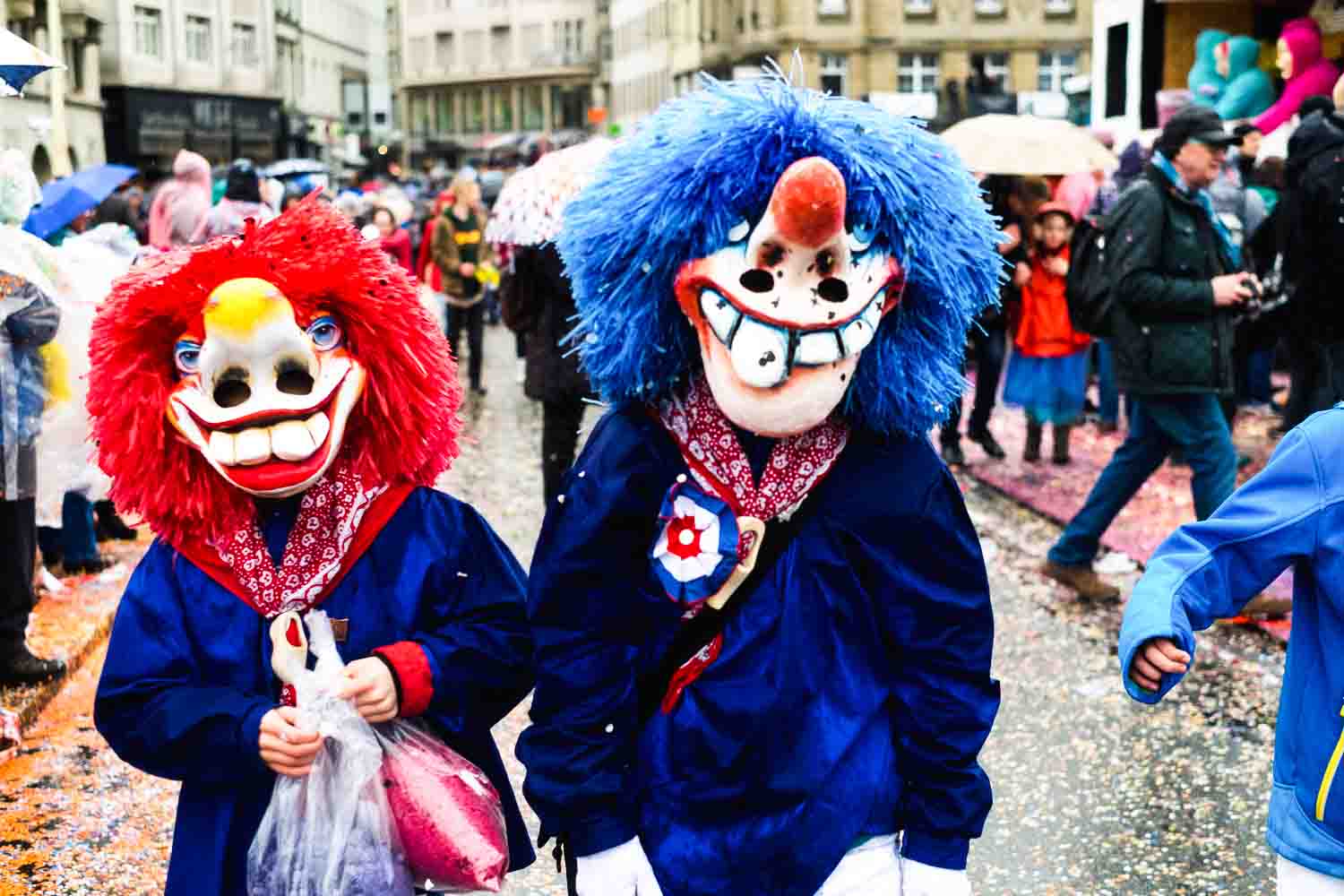
Here are the 10 best places to celebrate Carnaval in Europe
- Venice, Italy. This celebration is famous for its masks, costumes a masquerade balls.
- Nice, France. This could be the oldest Carnaval celebration in the world. The Flower Parade with an additional Night Time parade is famous for this city’s carnaval.
- Cologne, Germany, which is also very similar to the Carnaval celebration in the South of the Netherlands. It officially starts on 11/11 (November 11, the crazy number). But the real crazy days start the week before Lent with street parties, parades (on Rose Monday, ”Rosen Montag”), pub parties with lots of beer.
- Viareggio. Italy. This tradition started in 1873 in this coastal Tuscany town. It is famous for its huge floats and it has a Carnaval Museum.
- Binche, Belgium. One of the oldest Carnaval celebration in Europe, which is recognized by UNESCO. ”Gillies” are mythical creatures who are performed by boys and men with traditional costumes and masks and are the main characters of this celebration.
- Tenerife, Spain. This is the 2nd most famous Carnaval celebration, after Brazil with street parties and elaborate costumes.
- London, UK. This celebration takes place in the month of August. It started to embrace London’s Caribbean Communities with music, rum, Caribbean cuisine in the London streets.
- Basel, Switzerland. This celebration is unique, because it starts the Monday AFTER Ash Wednesday. This city invented confetti or ”Räppli” and you can see that for sure during their version of Carnaval, called ”Fasnacht”.
- Cadiz, Spain. This celebration might be the most elaborate one in Europe. It’s a 10 day celebration with live music, parades, comedy shows, puppet theaters and fireworks.
- Ivrea, Italy. A small medieval town with a medieval tradition. A food fight with 400 tons of oranges!
Carnaval in the Netherlands now
Carnival in the Netherlands is called Carnaval, Vastenavond (“Eve of Lent”) or, in Limburgish, Vastelaovend(j), and is mostly celebrated in traditionally Catholic regions, particularly in the southern provinces of North Brabant, Limburg and Zeeland, but also in Gelderland, especially in Twente. While Dutch Carnaval is officially celebrated on the Sunday through Tuesday preceding Ash Wednesday, since the 1970s, the feast has gradually started earlier and generally includes now the preceding weekend. Although traditions vary from town to town, Dutch carnaval usually includes a parade, a “Prince Carnaval” plus cortège (“Council of 11”, sometimes with a Jester or “Adjudant”), sometimes also the handing over by the mayor of the symbolic keys of the town to Prince Carnaval, the burning or burial of a symbolic figure, a peasant wedding (boerenbruiloft), and eating herring (haring happen) on Ash Wednesday. People use herring in a salad or eat it raw. ”Nonnevotten” is another traditional food.
Halloween
The only time we can dress up now in the US is in October during Halloween. We’ve seen it all in American movies. In some ways it was kind of a shocking experience, when I first celebrated it! It’s dark and scary. Everyone will ask you what costume you’re wearing, if people cannot recognize it in the first place. During “Carnaval”, everyone will wear colorful outfits and it doesn’t have to be something. You probably can imagine what a difference THAT was for me!
A big difference between Halloween and Carnaval is the decorations and the costumes. As I mentioned before, the decorations and the costumes are a lot scarier and darker with Halloween, than during Carnaval time. The decorations at Halloween seem to be more of an importance than the time they spend on costumes. Because of the the parades during Carnaval, people start months before the actual Carnaval time to MAKE their costumes. They rarely buy them. Decorations are not that important. Halloween is only one day, Carnaval is celebrated over several days.
The history and why people are celebrating Carnaval and Halloween is different as well!
What is Halloween?
ANCIENT ORIGINS OF HALLOWEEN
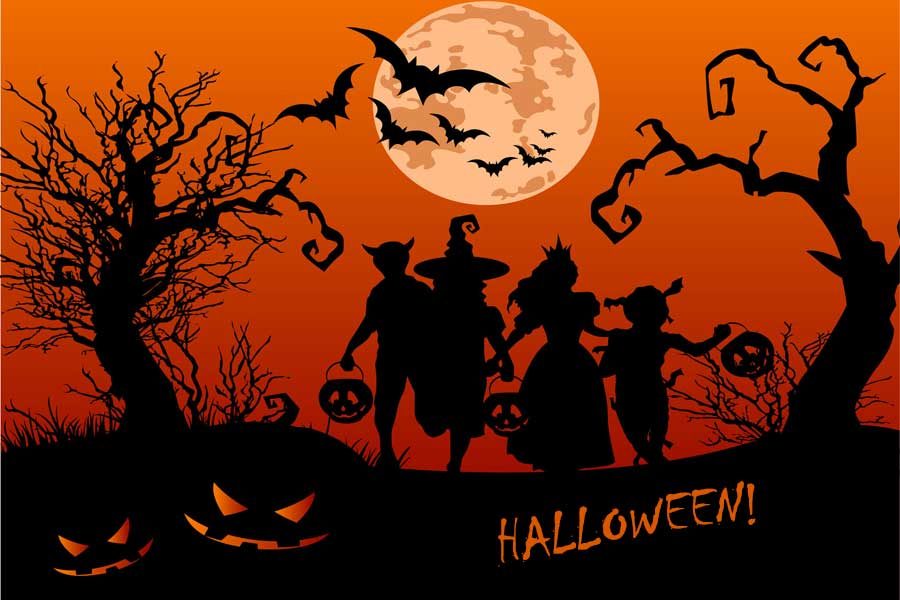
Halloween’s origin dates back to the ancient Celtic festival of Samhain (pronounced sow-in). The Celts, who lived 2,000 years ago in the area that is now Ireland, the United Kingdom and northern France, celebrated their New Year on November 1. This day marked the end of summer and the harvest and the beginning of the dark, cold winter, a time of year that was often associated with human death. Celts believed that on the night before the New Year, the boundary between the worlds of the living and the dead became blurred. On the night of October 31 they celebrated Samhain, when it was believed that the ghosts of the dead returned to earth.
Where does the costume tradition come from?
To commemorate the event, Druids, or so called Celtic priests built huge sacred bonfires, where the people gathered to burn crops and animals as sacrifices to the Celtic deities. During the celebration, the Celts wore costumes, typically consisting of animal heads and skins, and attempted to tell each other’s fortunes. When the celebration was over, they re-lit their hearth fires, which they had extinguished earlier that evening, from the sacred bonfire to help protect them during the coming winter.
Source: History.com

Halloween in the Netherlands
As far as I know, Halloween that I got to know over the past years living in the US, we do not have in the Netherlands. I remember that there are a few people who organize Halloween parties on a small scale. It is getting bigger and more popular though. Here is a list of Halloween events in the Netherlands.
It’s all about having fun, dancing, singing, playing music, colorful parades (also a lot of drinking), beautiful face painting and costumes…
Talking about costumes:
Here is a FREE costume tutorial:
My youngest is almost 4 now. For her first Halloween she was a little fox. The 2nd year she was a clown. My mom always said that making costumes is a great start for beginner seamstresses. It’s okay to make mistakes and especially with costumes, you’ll find creative solutions to fix these mistakes. Then you can try out more serious projects! Mom bought me a sewing machine when K was born. I don’t know why this late, but boy….I was hooked!!!
My mom made that cute little clown outfit with bells and everything! Last year M was a scarecrow. This year she wants to be an owl. So, here we go!
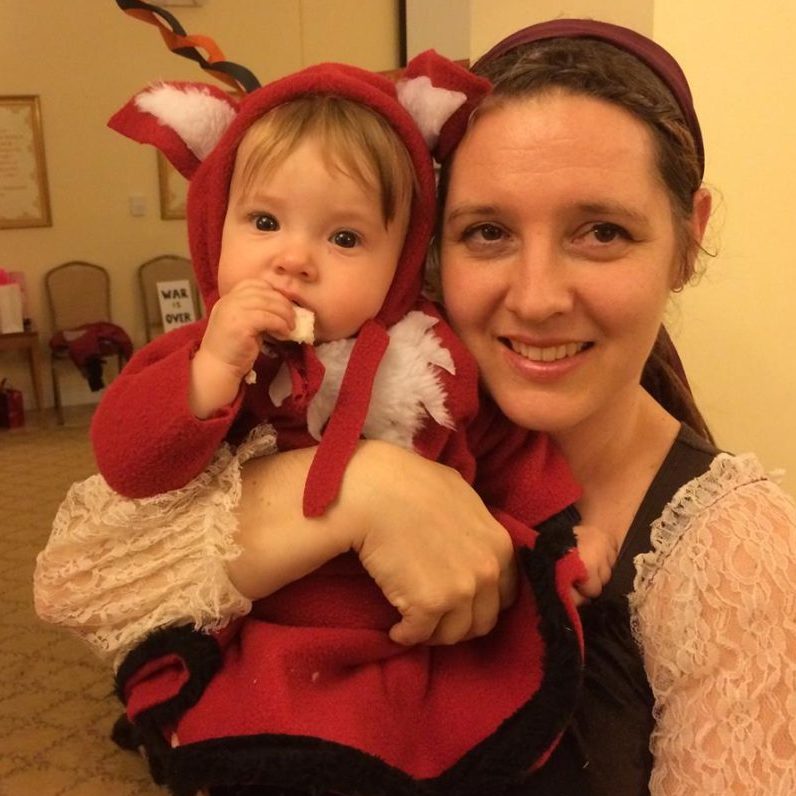
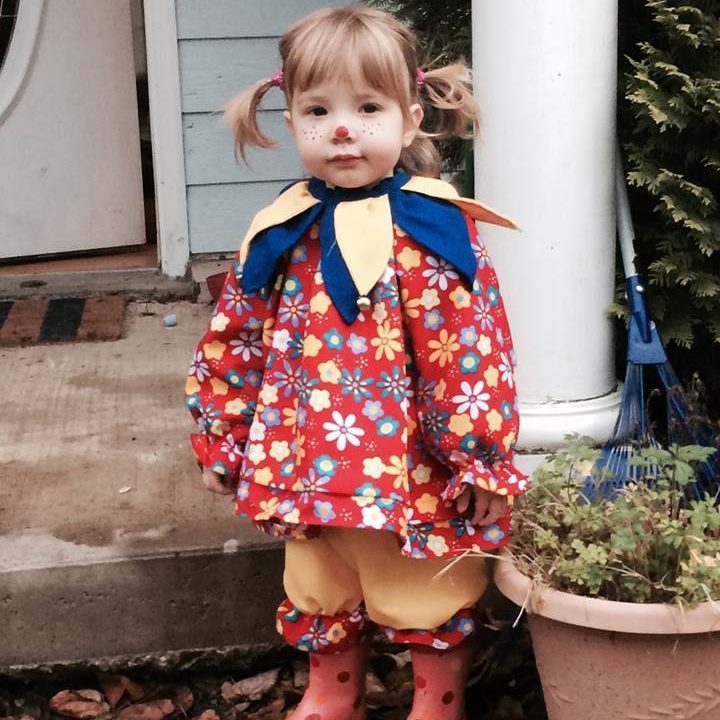

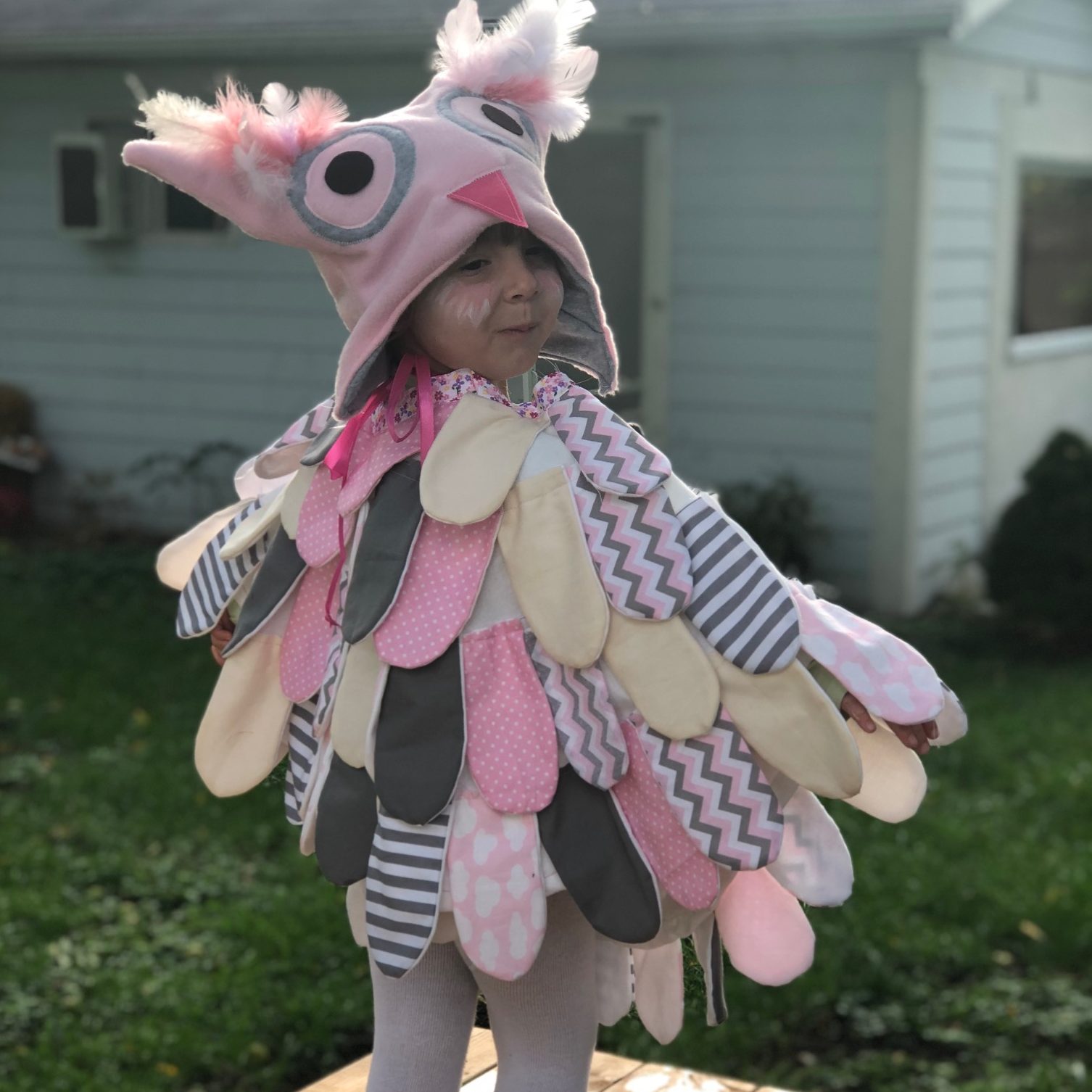
M loves pink, so I bought some fat quarters at Walmart with white, grey and pink. I found a piece of white fabric that I used for the “background” of the wings.
Here is where I found my inspiration for this owl costume: It is the easiest and cutest owl hat. It is nice and warm, all at the same time.
Owl Costume Instructions
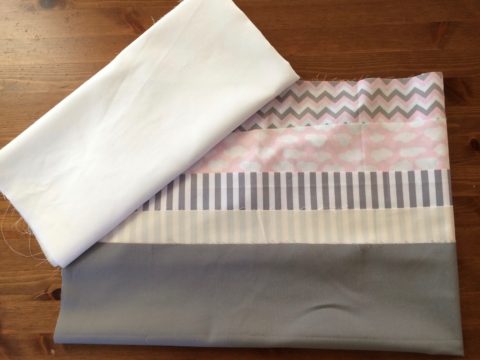
The wings
I measured her arms (stretched out) from the left middle finger all the way to the right middle finger and added 4 inches to it.
Fold the rectangle white fabric double and double again. Draw a line, so it looks like a quarter of pizza.

Use a plate or small bowl to trace and cut out the piece for the head (around the neck). Determine which side the back will be and make a cut about 3 inches long. This will be easier to get the head through the hole. You can tie it (see below), so the wings will not slide down the shoulder.

Fold all the edges of this cut and pin in place.
Cut 2 small pieces of ribbon (7 inches) to tie in the back and pin in place. Cut 2 elastic bands from about 3 inches for the middle fingers and pin in place.
Sew all around the wings and the neck line.
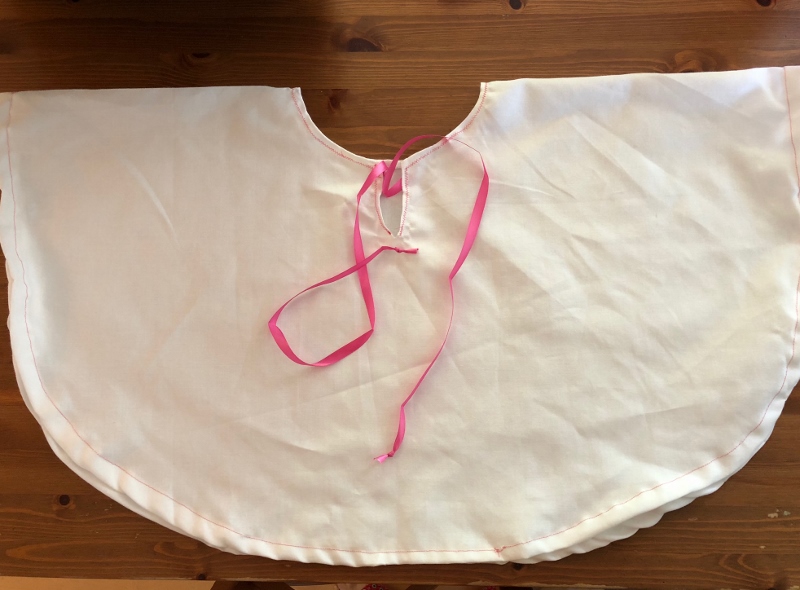
The Feathers
Use the Feather template to make the feathers. I know that my daughter is going to use the owl costume a lot more, so I made the feathers sturdier by using a piece of white fabric underneath the printed fabric. Cut out the template and trace the feather

Cut out the feathers and pin the printed piece with a white piece. Pin them right sides together. Sew around, leaving the straight side open. Make small cuts on several places on the curved side. Turn the feather inside out. Iron if need
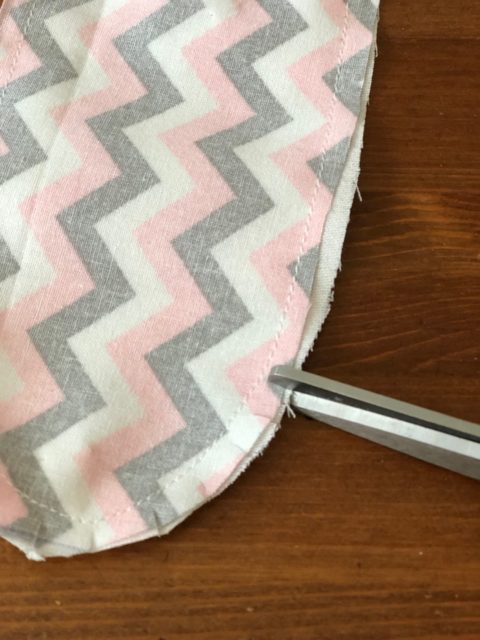
Lay out the feathers on the “background”, so you can see if you have enough feathers and how to mix the feathers. Start with the bottom row on one side of the “background”, pin and sew. The second row on top overlapping the first row a bit. Pin and sew. Continue with the other rows of feathers. With the last row (on top of the shoulders) you can be flexible. Push the straight edges in the feather for how much you need. Then pin in place and sew.
Do the same with the other side of the “background”. The wings are done!
The Hat
Here is the Hat Template Owl Costume. Use fleece (you can even use 2 different colors of fleece). One color for the inside of the hat, one for the outside. Cut out the pieces for the eyes and beak. I had some real feathers left to glue around the eyes.
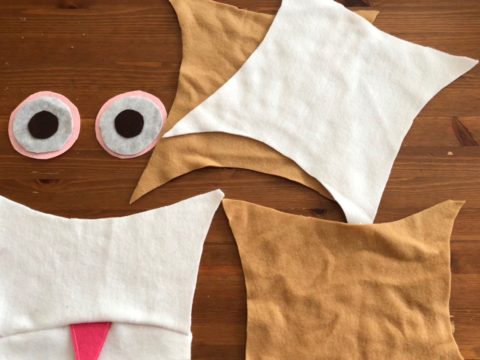
Sew the eyes and beak on the right side of the outer fabric. Optional, you can sew the feathers on the eyes as well.
The pictures above show different colors for the hat. Yes, I had to make a new one, because the first one was too small;)

Sew the outer hat together and sew the inner hat together. Turn the outer hat right side out. Leave the inner hat wrong side out. Put the inner hat in the outer hat and pin the bottom edges by folding them 1/2 inch in between the 2 hats. Sew all around. Optional, you can add ribbons on each side of the hat in case you’d like to tie the hat.
The first week of October passed, now it is time to make J’s warrior costume and K’s Jetpack guy…whatever that might be! Wish me luck!
Please let me know if you have any questions or the instructions are unclear. I’d love to see some pictures of your creations for Halloween or Carnaval in the comments below!
Alaaf, alaaf, alaaf!!!!
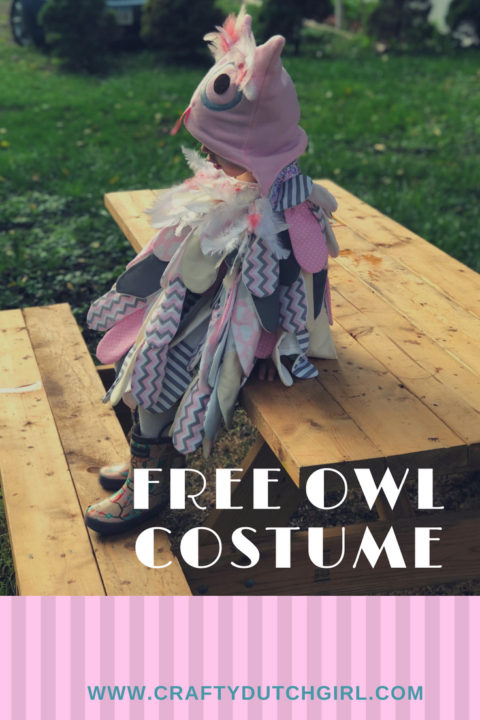

Hello everyone,
Welcome to my Crafty Dutch Girl blog! Grab a cup of “koffie” and browse through fun blog posts about our Dutch family expat life in the USA, Dutch history, Dutch recipes, Dutch things to do in the USA and all kinds of crafts and activities. Don’t forget to connect with me for new ideas! “Groetjes en tot ziens”.

